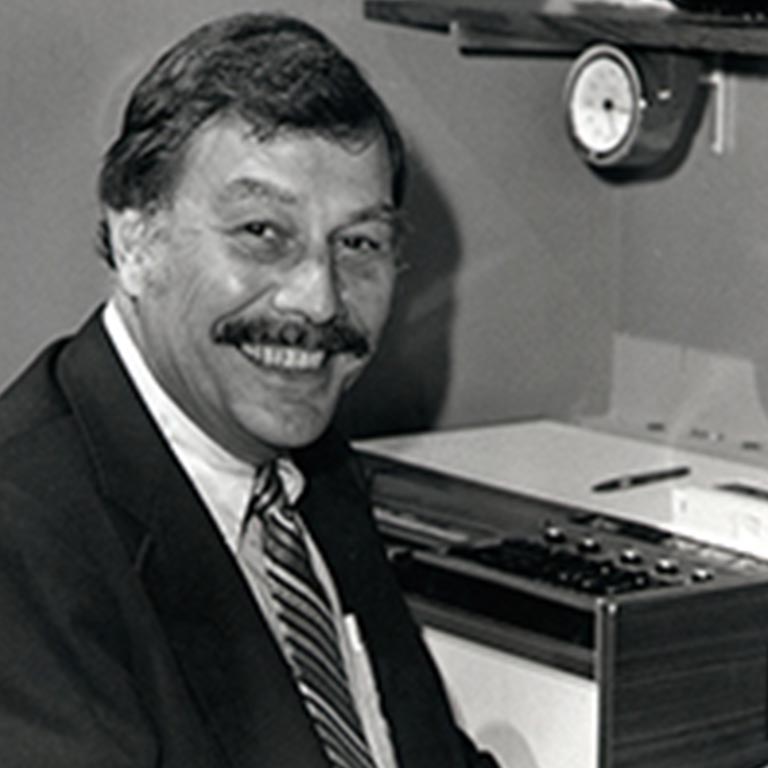In 1947, Richard Yoakam graduated from the University of Iowa into the mess of a new medium. To fix it, the FCC imposed a freeze on television licenses in 1948, soon after Dick became a reporter and newscaster for WHO, the NBC affiliate in Des Moines.
In 1950, he became news director for KCRG-TV, the ABC affiliate in Cedar Rapids. He was responsible for the development of television news and the construction and operation of KCRG-TV as the freeze ended in 1952 and television took off. When he began his broadcast career, fewer than 100 television stations were on the air in the United States and less than 10 percent of families had TV sets.
When he left to become an assistant professor in IU’s departments of journalism and radio and television in 1957, about 450 stations were on the air and 70 percent of families had sets.
Yoakam put broadcast news into the curriculum of the departments of journalism and radio and television, and designed the facilities for teaching television news reporting and editing in the renovated Ernie Pyle Hall in 1975. In the late 1960s, he was one of the architects of a farseeing reconception of the journalism major. Anticipating change in media ownership and communication technologies by the end of the 20th century, he and his colleagues developed a core curriculum that balanced instruction in knowledge, skills and professional values required of all majors, irrespective of their interest in a particular medium or professional craft.
His stature in television news helped launch careers, Jane Pauley’s notable among them. Throughout the 1960s and 1970s, he returned to the news room for professional refreshment, as a news editor in the New York headquarters and in the Washington bureau of NBC. He was Indiana state manager of election coverage for NBC from 1964 to 1976. He co-chaired the awards committee of the Radio Television News Directors Association for more than 20 years and was a juror for the Alfred I. DuPont Survey of Broadcasting from 1978 to 1985.
For his contributions to the profession and to journalism education, Yoakam received the IU Alumni Association Distinguished Teaching Award in 1983, was elected to the Indiana Journalism Hall of Fame in 1985, and was chosen as the 1985 Distinguished Broadcast Journalism Educator by the Association for Education in Journalism and Mass Communication.
A few years after he retired in 1989, loyal students established the Dick Yoakam Broadcast Journalism Scholarship, to which Dick and his wife, Mary Bob, also contributed generously. Their concern for the school and Indiana University never wavered.
Richard Yoakam


